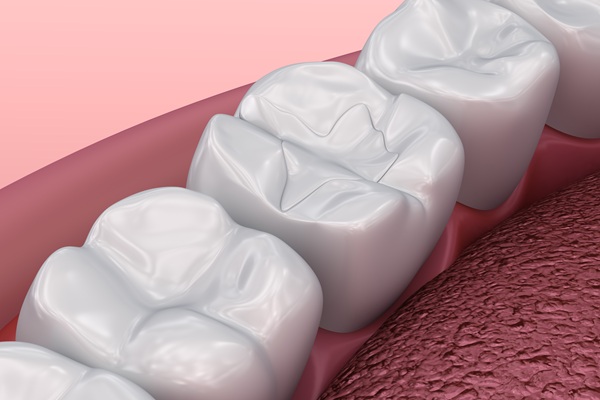What Is the Final Step in the Dental Implant Restoration Process?

If you are unhappy with your smile, you should consider a dental implant restoration. A dental implant is an artificial structure that is inserted into a person’s jawbone. People who have lost one or more teeth can benefit from dental implants. Dental implant surgery happens in multiple stages. The whole process often takes a couple of months mostly because the mouth needs time to heal. Read on to learn more about the dental implant restoration process.
The dental implant restoration process
The dental implant process involves a number of stages. Patients are required to schedule a consultation appointment with the dental health care provider. The implant will then be surgically placed in the jaw. The implant will then be covered for some months while it fuses with the bone.
Another important stage involves the placement of the abutment. This is the part that screws into the dental implant and supports the implant crown. The final stage often involves the placement of the implant crown. Here is what is involved when it comes to the attachment of the implant crown to the dental implant.
Implant crown placement
The final stage of the dental implant restoration process often involves the placement of the crown. Dental crowns can be connected to implants by either being cemented in place or screwed into the abutment. Cemented crowns often look far better and are more natural. These crowns have no screw holes.
Different types of crowns
When it comes to crowns there are two main options the dentist and patient can choose. These are namely removable crowns and fixed crowns. Artificial removable teeth are white. They have a pink plastic material that simulates a natural tooth as well as the surrounding gum tissue. The crown is often mounted on a metal frame that can snap into the abutment.
This makes it convenient and easy for a person to remove it for daily cleaning. In the case of a fixed crown, the artificial tooth can be screwed into the abutment or cemented on and this is permanent. An individual will not be able to remove a fixed crown for cleaning. But this type of crown is usually more stable and stronger than a removable crown.
Takeaway
The dental implant restoration process often happens over several office visits. Attaching the crown to the implant is usually the last step in the process. This basically involves connecting the implant crown to the dental implant. There are different types of crowns a person and dentist can choose from. All of them have their own advantages.
Dental implants can help give you a beautiful smile. Your dentist will decide if you are an ideal candidate for dental implants. If your dentist determines they are suitable for you, you should plan for the process to take a couple of months. Although this may be inconvenient, you should remember that dental implants often last for many years. If you have any questions about the dental implant restoration process, contact your dentist.
Are you considering a dental implant restoration in the McLean area? Get more information at https://www.oaktreefamilydental.com.
Check out what others are saying about our services on Yelp: Read our Yelp reviews.
Recent Posts
While damaging a dental filling can be painful and problematic, it is also manageable with the right steps. A dental filling can restore the structure of a tooth after decay or minor damage. However, fillings can sometimes chip, crack, or even fall out due to daily wear, biting on hard foods, or unexpected trauma. Proper…
A missing tooth can increase the risk of developing gum disease and cause teeth around a gap to become misaligned. A partial denture for one missing tooth may be recommended as a fast and cost-effective solution.Most dentists usually recommend two options for a single missing tooth. The first option consists of a false acrylic or…
According to the American Dental Association, over 120 million people in the U.S. are missing at least one tooth. To rectify this, a partial denture for one missing tooth may be a solution. If you are considering getting a partial denture or already have one, it is important to understand the proper way to care…
Gum disease is a common yet serious oral health issue that can cause discomfort, damage, and even tooth loss if left untreated. With the right gum disease treatment, patients can not only stop the infection in its tracks but also restore the patient's overall oral health. Knowing the true impact of gum disease and how…


